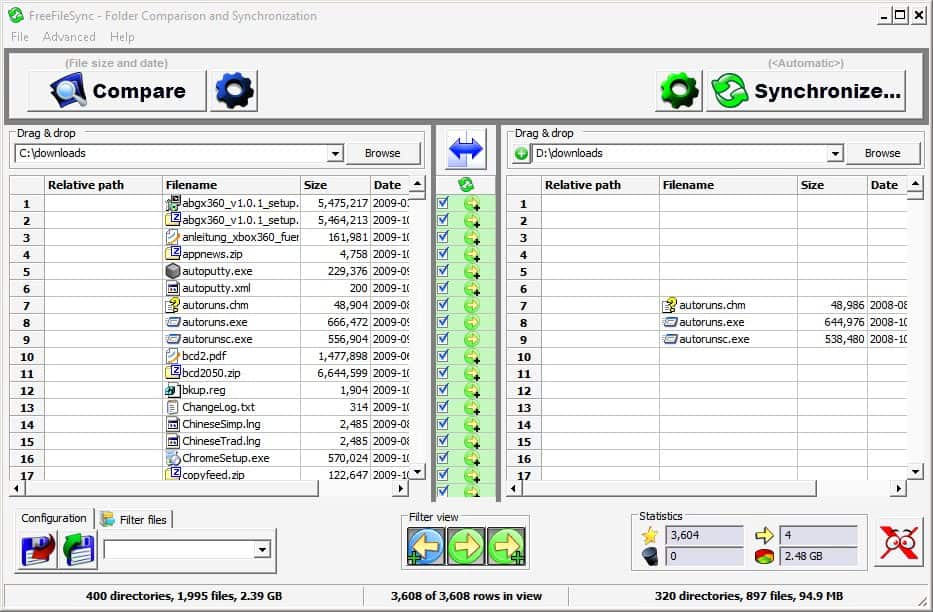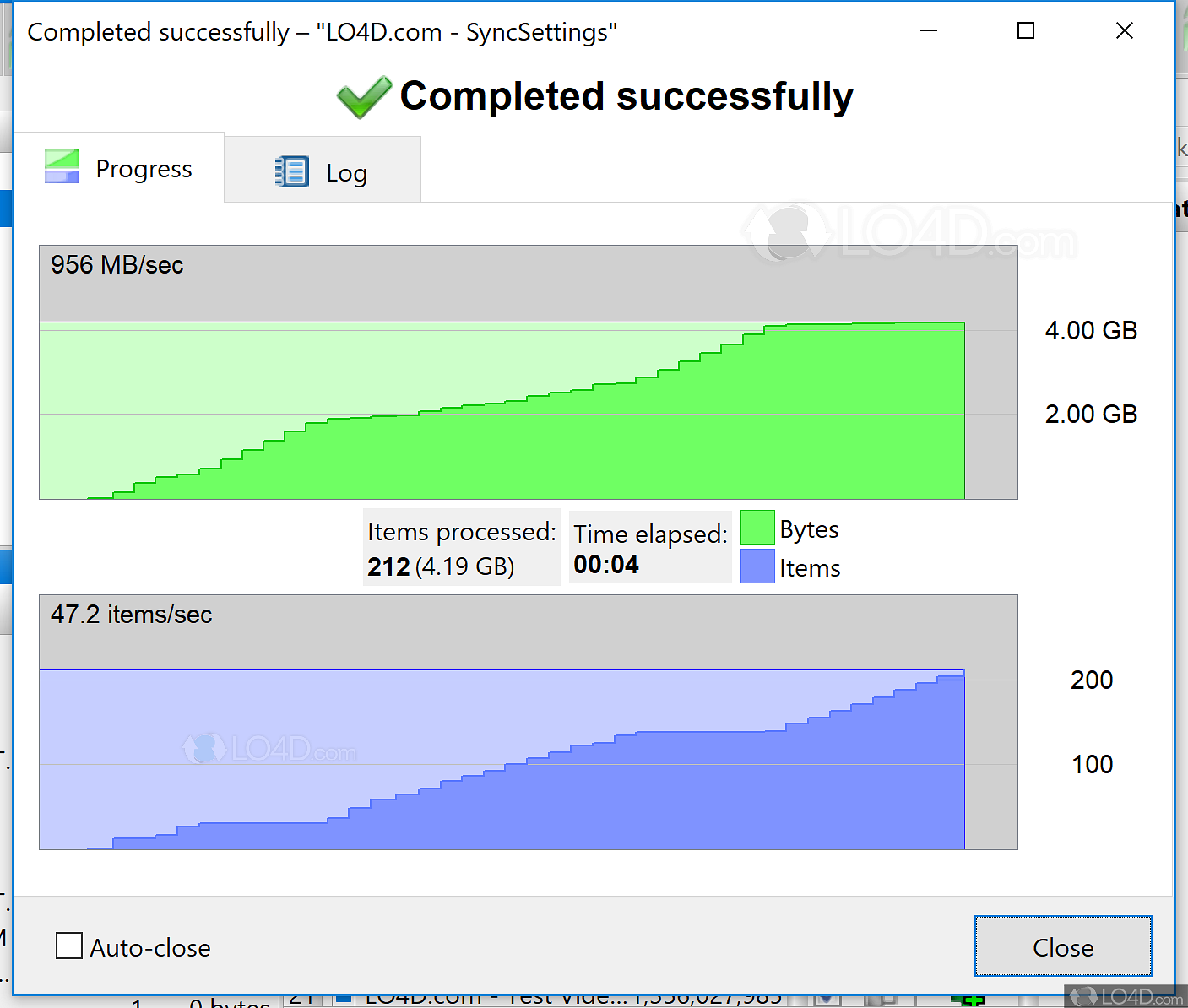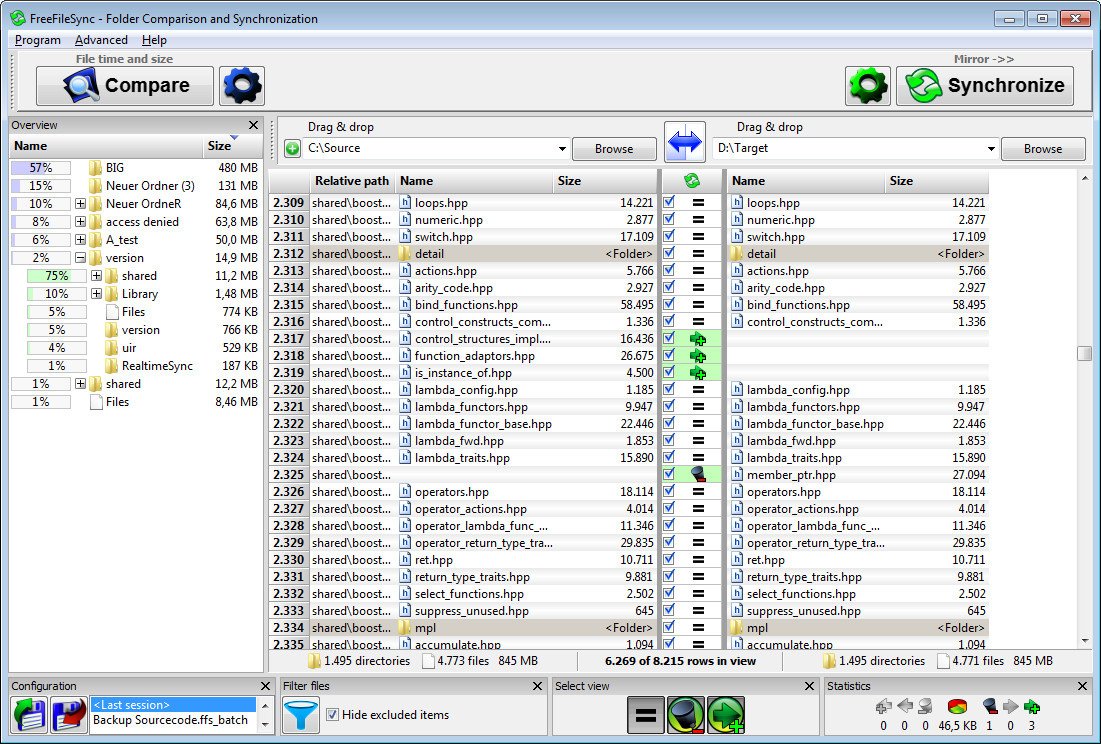

- Freefilesync download how to#
- Freefilesync download install#
- Freefilesync download update#
- Freefilesync download portable#
In this post, we have completely explained how you can install and launch and uninstall FreeFileSync on Ubuntu 22.04. After doing so, run the setup file to start the installation of FreeFileSync. Then unzip the FreeFileSync setup file and make it executable using the “ $ sudo chmod +x FreeFileSync_11.21_n” command. On Ubuntu 22.04 to install FreeFileSync, first, Download the setup file from FreeFileSync official site. We have gone through the procedure to install, launch and uninstall FreeFileSync on Ubuntu 22.04. To uninstall FreeFileSync from Ubuntu 22.04, execute the command given below on the terminal: $ sudo rm -r /opt/FreeFileSync
Freefilesync download how to#
How to uninstall FreeFileSync on Ubuntu 22.04 Want to uninstall FreeFileSync on Ubuntu 22.04? Check the below-given section.

Then double-click on the FreeFileSync icon to launch the application:įreeFileSync is successfully launched and ready to use: Right-click on the “ FreeFileSync” icon and select the “ Allow Launching” option from the drop-down menu: To launch FreeFileSync on Ubuntu, check out the provided procedure.įirst of all, click on the FreeFileSync shortcut that is automatically created on the Desktop:
Freefilesync download update#
Now, let’s take a look at the procedure to launch FreeFileSync on Ubuntu 22.04. Release Status: Major Update File: Increased SFTP buffer sizes for faster upload/download New WeekDay. To accept the FreeFileSync license terms, enter the “ Y” key :Īgain, press the “ Enter” key for starting the FreeFileSync installation: If the file is non-executable, make it executable using the below-given command: $ sudo chmod +x FreeFileSync_11.21_n Step 4: FreeFileSync installationĮxecute the setup file to install FreeFileSync on Ubuntu 22.04: $. Move to the “ FreeFileSync_11.21_Linux/” directory: $ cd FreeFileSync_11.21_Linux/Ĭheck whether the FreeFileSync file is executable or not: $ ls -la Use “ CTRL+ALT+T” to open the terminal and move to the “ Downloads” directory: $ cd Downloads/Įnlist the content of “ Downloads” directory using “ ls” command: $ ls Unzip the setup file by right-clicking the file and selecting “ Extract here” from the opened drop-down menu:Īs you can see, the FreeFileSync setup file has been successfully unzipped in the “ Download” folder: Step 3: Make downloaded file executable Open the “ Downloads” folder from the “ Home” directory, and verify the presence of the downloaded file:
Freefilesync download portable#
Donors will have access to additional features such as an auto-updater, portable version, and parallel syncing.Download the setup file for the Linux operating system from the “ Download FreeFileSync” asset:Īs you can see, the “ FreeFileSync 11.21” file is downloaded and it will be saved in the “ Downloads” directory: Step 2: Unzip FreeFileSync setup file This being an open-sourced tool, FreeFileSync is funded by donations. Since you can easily automate the entire backup process, FreeFileSync will ensure that all your important files are included in the backup. This will be a great feature for users who have to create frequent backups. With FreeFileSync, you can even create batch jobs to automatically back up data from your PC’s internal hard drive.

You can set IdleTime for this, so you can configure a regular time span for detecting and implementing changes. This will leave the mundane task of updating backup files to the software. When a change happens, it will execute a user-defined command line, so it will automatically sync with the target storage. With this, the software will continuously monitor the folders you have identified, waiting for any file change notification. This is helpful for continuous folder synchronization. It will then show you how it plans to synchronize the differences, so you can manually audit them just in case you do not need to copy everything.Īnother advantage of this tool is RealTimeSync. Just pick the folders that you would want to compare, and the software will show you a detailed list of all the differences that it found following the qualifiers you identified.

The two basic steps of FreeFileSync lets you compare and synchronize your data.


 0 kommentar(er)
0 kommentar(er)
